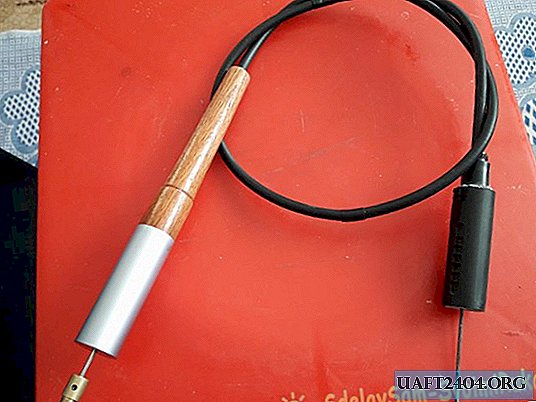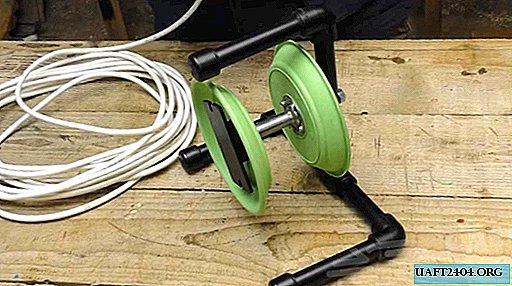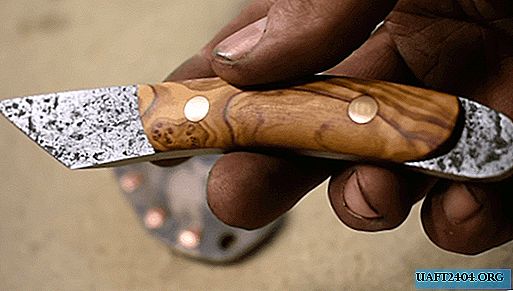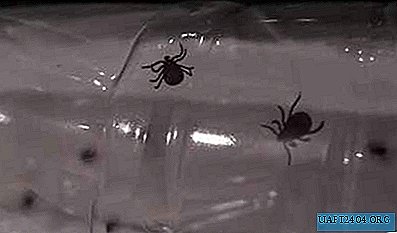Share
Pin
Tweet
Send
Share
Send

If you have an engraver, and you like, for example, engaging in carving from bone, wood or stone, then this tool will work much faster and more convenient. But in the manufacture of a flexible shaft there is one caveat, it is necessary to determine for which tool you need a flexible shaft. If, for example, for a drill or a screwdriver, then it is better to use a brake cable from a motorcycle (or a similar one), and if for a machine or engraver, then a bicycle cable will be more convenient here. I assembled a flexible shaft, the manufacture of which I will describe below, for a powerful electric drill, and therefore I used a motorcycle brake cable. The engraver recently acquired by me also pulls it - you can grind it and cut it and drill it, but during operation the speed drops and the engraver's engine quickly heats up. It is understandable, for such a small machine, a motorcycle cable is too heavy. So for him, on occasion, I will assemble a flexible shaft lighter and thinner from a bicycle cable ... I will not hide, the manufacturing process is quite long, but at the same time interesting.
Will need
- Two bearings from old roller skates (or similar in size).
- Steel cable in a protective sleeve, from a motorcycle (or from a bicycle).
- A metal tube suitable for the diameter of the outer diameter of the bearings.
- Wooden handle from an old soldering iron (or a similar wooden tube).
- Steel rod for the shaft on which the cartridge will be installed later.
- Collet chuck with inner bore for your selected shaft shaft.
- Metal tube, with a diameter under the inner diameter of the bearings.

Tools and consumables required for work:
- Soldering iron, tin and flux.
- Boron machine or engraver, with a saw blade and a drill 3 mm.
- Pliers.
- Seconds glue with soda.
- Insulating tape.
- Knife.
- Scissors.
- Solid oil and engine oil.

Flexible shaft manufacturing
First of all, prepare the cable. It must be pulled out of the protective sleeve. In order for it not to dissolve, when we cut off the restrictive seal, it must be soldered with tin. Smeared with flux, heated, saturated with tin, cut off.


We pull out of the sleeve. On any brake cable, from the other end there is a threaded rod for adjusting traction. We cut the thread from it, so that a small segment remains, a centimeter and a half. Next, we solder a metal tube to this segment, on which we will put bearings in the future. We also smear the soldered surfaces with flux, put the tube on a piece, throw a piece of tin into the tube, and heat it with a soldering iron until the tin melts and spreads over all the greased surfaces.

While the tube with the soldered cable cools, we will prepare the rod for the cartridge. I took it from a CD drive. But you can any suitable caliber. We adjust this rod to the inner diameter of the tube by winding electrical tape around it until the desired caliber is reached.


We insert the rod into the tube, coating it with glue.

When the glue inside seizes, the connection will turn out no worse than from soldering, this can be seen in the video ... Next, we will prepare the holder body. For this purpose I took an aluminum case from a perfume bottle - it almost perfectly fit under the bearings. We drill a hole in the end of the housing for the outlet of the rod for the cartridge.

We put bearings on the tube with the cable. My bearings came up clearly, but for the sake of fidelity, I still dripped glue, for greater reliability.

Further, we also customize the bearings under the housing using electrical tape.

We put glue inside the case, and insert the tube with the bearings put on it. The bearings are positioned so that the free edges of the housing remain. About a centimeter.

Do not forget to drop a drop of oil on the bearings. We carefully monitor that glue does not get into the bearing mechanism, otherwise all the work done will go down the drain! I used Cosmo CA-500.200 glue - it is extremely difficult to tear off something glued to it, that's why I preferred to solder it ... So, the shaft housing is ready. It remains to attach the wooden part of the handle with the cable sleeve.

We pass the sleeve into the wooden handle, fix it with glue inside the handle. Next, generously lubricate the cable with solid oil.

We pass it into the handle with the sleeve and fasten, again, with glue, the wooden handle to the aluminum case.

Install the collet chuck.


If the resulting flexible shaft is planned to be used only for a drill or screwdriver, then the job is done - we fix the protruding end of the cable into the drill chuck, and use it with pleasure!

And if you made a shaft for the engraver, from a thin bicycle cable, then you need to also make a stiff protection for the cartridge so that the elastic cable does not loose it. Each engraver has a cap on the thread below the cartridge. This cover is removed and, if necessary, a plastic cartridge with a flexible shaft cable is screwed onto this place. We need a thread, as on the lid, a piece of plastic pipe into which the thread fits, and a tapering end in which we will thread the cable sleeve. There is nothing complicated; glue all the parts together, put on the cable sleeve, clamp the end of the cable in the collet chuck, and wind the resulting cap on the engraver body.


He will not let the rotating steel cable spatter the brass collet chuck. I made a flexible shaft for a drill, but in order to show clearly how to use it with an engraver, I also made such a protective cap.

Such a shaft will not take up much storage space - it is easy to twist it into rings and hang it on a carnation in a barn or pantry, and at the right time it will help you make a hole in a hard-to-reach place, or screw a screw there.

Share
Pin
Tweet
Send
Share
Send











